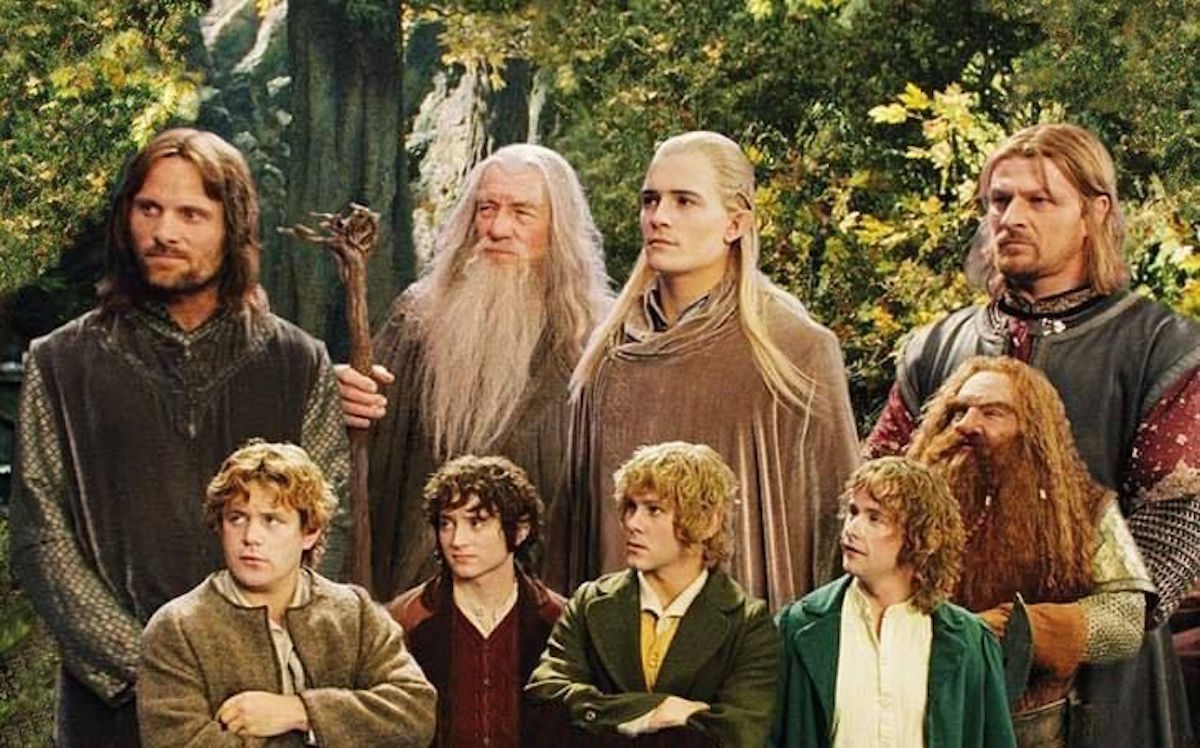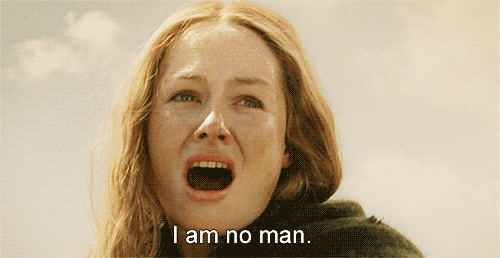Does ‘The Lord of the Rings’ Trilogy Pass the Bechdel Test?
Girls just wanna have...a single conversation that's not about a man.

The Lord of the Rings is quite beloved, both in book and movie form. It’s also very much a fantasy “dudes rock” kind of series. There aren’t a ton of female characters—and that’s not particularly shocking. J.R.R. Tolkien was inspired by his service in the Great War while writing—certainly, at the time, he would have been surrounded by a lot of men like him. He tutored female scholars and did write a story inspired by his wife, Edith, in The Silmarillion, but his world was primarily male, and his books tended to follow suit. That said, there are some great female characters in this film, so, does The Lord of the Rings pass the Bechdel Test anyway?
What is the Bechdel Test? The Bechdel Test, explained
The thought experiment or test, if you need a reminder, came from Fun Home graphic novelist Alison Bechdel and examines whether or not a work of fiction 1) has more than one female character with a name, 2) has a scene in which two of those female characters talk to each other, and 3) that conversation is about something other than a male character.
Simple, right? You’d think most movies could pass the Bechdel Test. You’d be surprised.

Does The Lord of The Rings pass the Bechdel Test? Answered and explained
Kind of. There is one scene in the film trilogy where two named female characters interact and don’t talk about a man. It happens in The Two Towers, when Eowyn comforts a child who wants her mother.
But honestly, that’s a pass on a technicality. So, my official ruling is that The Lord of the Rings movies fail the Bechdel Test. The three Hobbit movies fail too, by the way. That’s a lot of hours of movies that lack two female characters having a single conversation that’s not about men. A lot. Amazon Studios’ upcoming Lord of the Rings series might be the first screen adaptation of Tolkien’s work to truly pass the Bechdel Test. We’ll see.
The books have more prominent female characters than the original trilogy of films, I think. We get a little more from Sam’s crush, Rosie Cotten, and Bilbo’s snooty cousin, Lobelia Sackville-Baggins. There’s Tom Bombadill’s wife, Goldberry. And don’t forget the Gondor healing woman named Loreth who gives Gandalf some key information. How could you, right? That said, notice how most of those characters are lowkey defined by their relationship to a male character…yikes! Plus, there are two whole races of creatures in Lord of the Rings whose ladies straight-up bounced. Where are the dwarf women? Where are the entwives?
All of the female characters, I might add, are spaced out both in the narrative and over the map of Middle Earth. The titular Fellowship kind of just meets one woman at a time. There’s no opportunity for them to have a chat. The only two who live in the same town are Lobelia and Rosie, who probably would not have that much in common if forced to talk anyway. Welp!

Does the Bechdel Test even matter?
That said, I tend to use a Pirates of the Caribbean approach to the Bechdel Test. It’s a guideline, not a rule. Failing the Bechdel Test does not make or break a work of art, or definitively define it as feminist or not. The test is most useful when analyzing trends in a particular genre, a particular canon, or a particular year or era. There are books older than Lord of the Rings that pass the test, like Jane Eyre, Anna Karenina, and Mrs. Dalloway. The His Dark Materials fantasy trilogy passes.
There are plenty of other problematic misogynistic genre tropes that The Lord of The Rings avoids. The three to four damsels we meet are not in distress. They’re never sexually assaulted for purposes of character development. Eowyn errs on the side of the “Not Like Other Girls” trope without going full “girl boss Strong Female Character” trope, at least in my opinion. I personally don’t find LOTR alarmingly sexist — but if you do, that’s totally valid! The race implications of Tolkien’s narrative and Peter Jackson’s films, and the intersections therein, are a different story. The Lord of the Rings is also, on the surface at least, strikingly heteronormative. So feel how you feel, and watch what you enjoy. Just perhaps, with a little more awareness.
However…anyone who tries to tell you that the spider Shelob counts as one of Tolkien’s female characters should go directly to Mordor. Do not pass GO. Do not collect two hundred dollars. That’s an immediate red flag in my book. Puh-lease.
(featured image: New Line)
—The Mary Sue has a strict comment policy that forbids, but is not limited to, personal insults toward anyone, hate speech, and trolling.—
Have a tip we should know? [email protected]